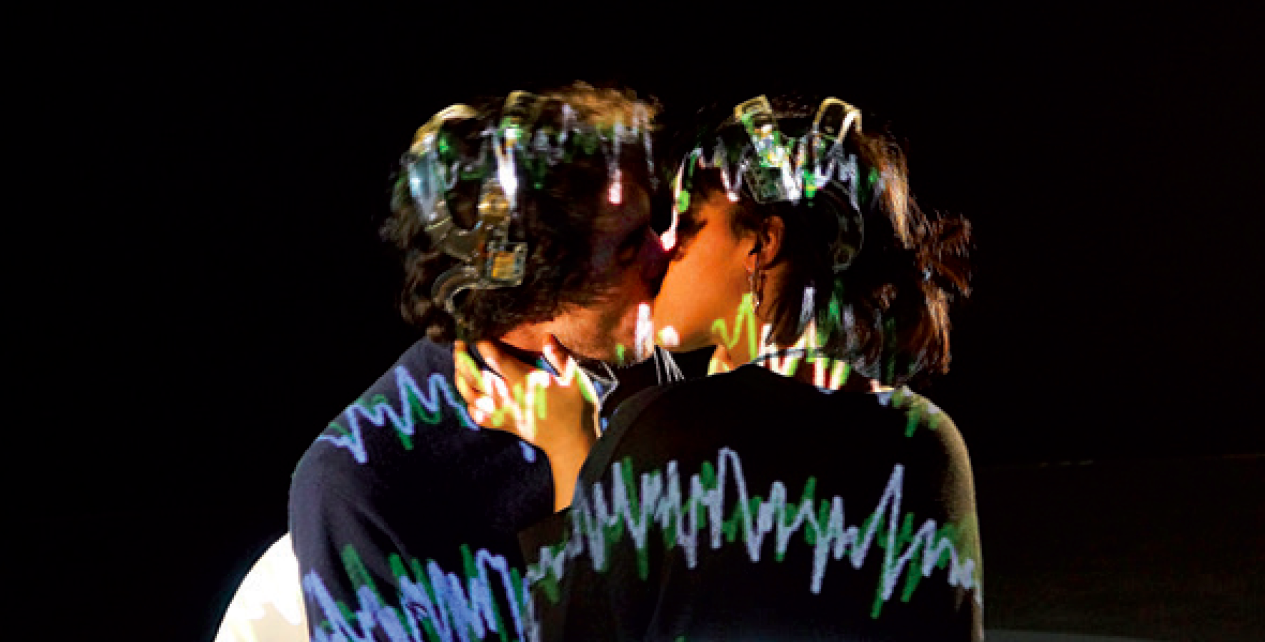Can a kiss can be translated into bio-feedback data? How does your kiss feel in E.E.G. data? Kissing Data explores a shared Neurofeedback System (Multi Brain Computer Interface) for networked Kissing. During performance-installations, people are invited to experience a shared kiss, as an intimately co-created, reflexive data-scape. Acts of kissing are re-orchestrated for a poetic, digital synesthetic ritual in a Kissing Data Symphony.

The new performance project – KISSING DATA – is based on the artists earlier research titled E.E.G KISS, which is turned into a new technical and social research and development for a Multi-Brain Computer Interface. KISSING DATA interface allows not only to measure kissing, but also to monitor the activity of the responsive brain of the Observers, who are watching the Kissers.
Data visualisation and audification create a neurofeedback symphony of and for Kissers and Observers, for a shared experience.
The artists: “Tele-presence technologies extend our bodies beyond biological boundaries in time and space, but they prevent us from touching. In a poetic, electric environment for kissing and measuring, for synchronizing and merging, we research a shared neuro-feedback system for networked kissing.”
Kissing Data is a multi brain computer interface (Multi BCI). The artists assumption behind this work is that in near future, people will increasingly communicate through Multi BCI.
Current dominant industrial Multi BCI design is based on economical interests and focusses on among others efficiency, categorization, control and privacy protocols.
As artists they feel that now is the moment to interfere and see how we together can reflect and create new understanding of ethical and sensitive Multi BCI design for future shared experiences of intimacy and trust.
Therefore, the artists would appreciate to test togethrer with the audiences the social impact and to share the experiences of the Kissing Data multi brain computer datavisualization that they have developed.
Together with the audiences, the artists will test the visual and experiential interplay between data of Observers and data of Kissers, the way the envisioned social and data interplay can facilitate new shared experiences of intimacy and trust, for all participants.
Important! The participation doesn’t require only kissing! In some of their earlier EEG KISS exhibitions, they have experimented with acts of “caressing each others faces”. Results show that this works as well in terms of ‘publically shared intimacy’. This way, families (e.g. mother and child) and foreigners can more easily participate.

